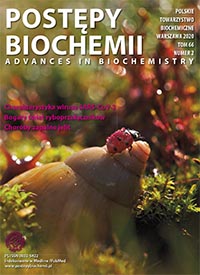Membraneless organelles and liquid-liquid phase separation â methods for their characterisation
DOI:
https://doi.org/10.18388/pb.2020_330Abstract
Membraneless organelles (MLOs) are a large group of intracellular compartments formed during various stages of a cell life. They are important subcellular structures which enable a cell performance of vital physiological processes including stress response. MLOs can be found in cytoplasm and organelles that are sealed by lipidic membrane, mainly in nucleus. They are formed by the thermodynamically driven liquid-liquid phase separation (LLPS). MLOs contain proteins possessing intrinsically disordered regions (IDRs) which together with RNA spontaneously phase separate from the surrounding milieu. This paper presents information on the biophysical basses of the formation and functionality of MLOs. It also discusses a range of experimental techniques that can be applied in biochemical and biological studies of these sub-cellular structures.
Downloads
Published
Issue
Section
License
Copyright (c) 2020 Advances in Biochemistry

This work is licensed under a Creative Commons Attribution 4.0 International License.
All journal contents are distributed under the Creative Commons Attribution-ShareAlike 4.0 International (CC BY-SA 4.0) license. Everybody may use the content following terms: Attribution — You must give appropriate credit, provide a link to the license, and indicate if changes were made, ShareAlike — If you remix, transform, or build upon the material, you must distribute your contributions under the same license as the original. There are no additional restrictions — You may not apply legal terms or technological measures that legally restrict others from doing anything the license permits.
Copyright for all published papers © stays with the authors.
Copyright for the journal: © Polish Biochemical Society.




